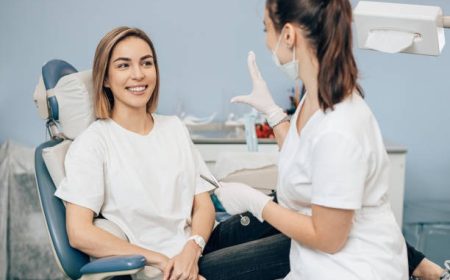Dental health is crucial for the overall health of your dog or cat. Are you familiar with periodontal disease symptoms in pets? If this problem is not addressed promptly, it might proceed to more serious health problems, such as impaired kidney, liver, or heart function. It is critical to understand the causes of dental problems in your pet and recognize the signs of periodontal disease.
When do dental issues start in pets?
Dental problems develop in pets when plaque hardens into tartar. While tartar is easily visible and cleansed above the gum line, plaque below the gum line is harmful and creates an environment conducive to infection and jawbone injury. To spot potential problems early and keep your pet’s mouth healthy, a vet dentist from Wellesley-Natick Veterinary Hospital should examine your pet’s teeth at least once a year.
Promoting Your Pets Oral Health
Several strategies for promoting your pet’s dental health are listed below. Consult your professional veterinary dentist to decide the best oral health regimen for your cat or dog based on your lifestyle.
Professional Cleaning
The American Animal Hospital Association states that cats and dogs should begin professional teeth cleaning at one or two years, depending on their size (AAHA). Your pet will be sedated to ensure that each tooth, particularly those hidden behind the gum line, receives the attention and care it requires.
Home Care
At-home dental care routine is crucial for your pet’s dental health. Veterinary doctors strongly advise pet owners to brush their pets’ teeth regularly and, if possible, multiple times per week. This will aid in removing the majority of plaque prior to it mineralizing into tartar.
To acclimate your pet to the use of a toothbrush, prepare their teeth with a dental wipe or gauze pad before brushing. While the majority of dogs enjoy brushing, cats can be a bit more obstinate. Bear in mind that regular cleanings will help your pet feel more comfortable.
Dental Treats
Along with professional cleanings and an at-home care program, some pet food and treat products help cats and dogs maintain optimal dental health. Certain treats and pet diets may aid in breath freshening, while others may have a crunchy texture that benefits tooth cleaning and tartar reduction.
When manufacturers of pet food make a dental claim on the label, they will also describe how the benefit is achieved (e.g., “with ridges to scrape teeth” or “with peppermint to help freshen breath.”) The Association of American Feed Control Officials’ model regulations for pet food contains these claim requirements (AAFCO). While at the veterinarian, inquire about additional services such as orthopedic surgery for pets to learn about further ways to make your pet’s life more comfortable.
The Takeaway
While many pet owners feel that proper pet dental hygiene is solely for the purpose of preventing doggy breath in the morning, the benefits of proper pet dental hygiene extend far beyond fresher-smelling puppy kisses. Indeed, it may significantly affect your pet’s overall health. Domestication of dogs and cats has mostly eliminated the natural instruments these animals used to keep their teeth clean and flossed. These days, it is up to pet owners to meet this demand. In some instances, your competence to give care may be insufficient to meet the needs.








